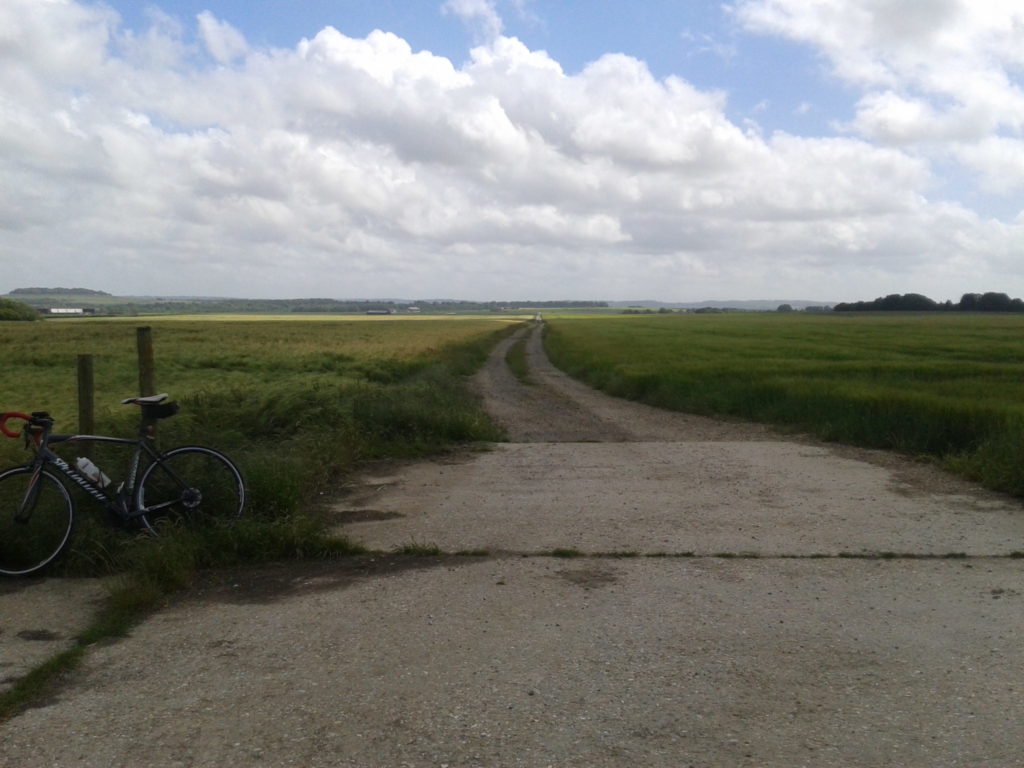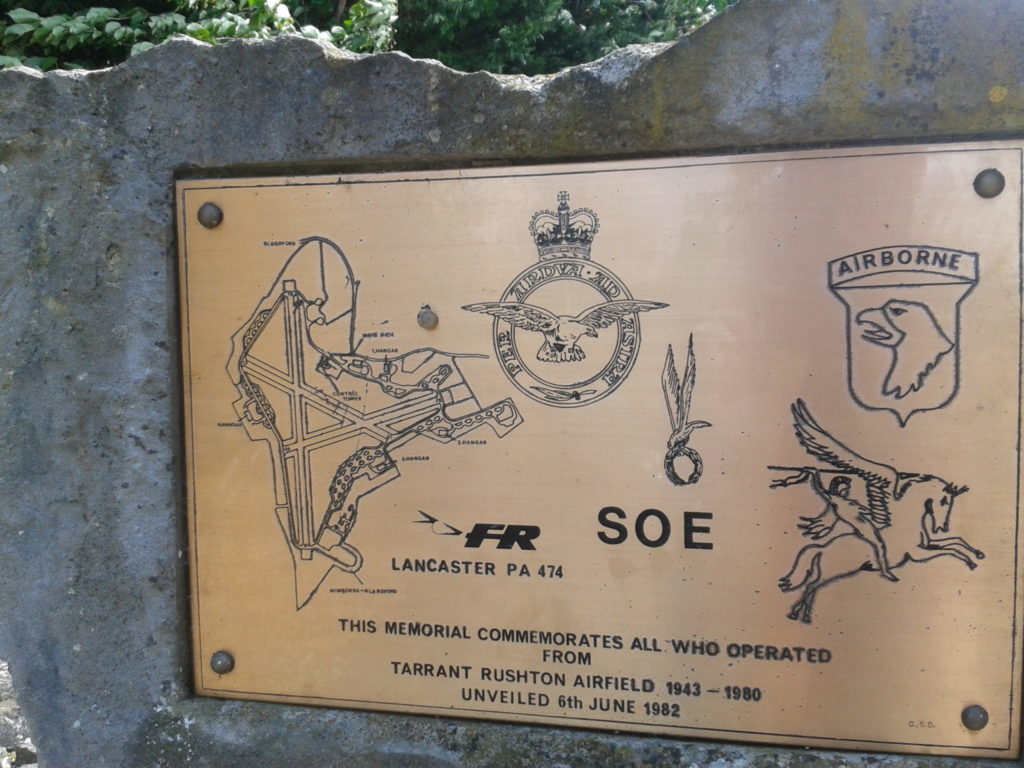It’s time once again for the annual end-of-year musings we like to call Shadows and Reflections. Today Jon Woolcott looks back over the past 12 months.

It’s unavoidable: the chest-thumping whump-whump of Chinooks low over the Blackmore Vale, the drone of transporter ‘planes, abandoned underground ROC posts, Tyneham ̶ Dorset, like many counties, has a military landscape, an armed airspace, but until this year I’d mostly taken it for granted, thinking of it as part of the rural background noise.
A few summers ago I accompanied the cyclist and writer Jack Thurston on a day’s ride in Dorset, while he was researching his book Lost Lanes West. Sitting outside a pub at lunchtime, poring over maps and plotting quiet routes across the county, he remembered once visiting the isolated hamlet of Tarrant Rushton. I thought I knew the Tarrant valley and its villages well. At Tarrant Gunville the seventeenth century baroque architect Vanbrugh designed a huge and now vanished mansion. Tarrant Monkton had been the home of the artist Rena Gardiner and was also where I tortured my guitar teacher’s ears every week for a few years before he sensibly moved to Scotland. And at Tarrant Crawford I had found a lonely church, the only remnant of a once important monastery. But Tarrant Rushton had escaped my notice.
Across a narrow bridge Jack and I found the hamlet, tucked into the lea of a steep hill above the valley, the winding lane becoming a concrete track. We emerged, puffing, onto a gently sloping and wide plateau, sown with crops, and around the edge of this huge field a cracked perimeter road. In the distance I could make out a large barn. This was the site of Tarrant Rushton Airfield, built in the hurry of war in 1942, the barn being a repurposed hangar. We made our bumpy way along the old perimeter track, until finally we reached the southern end of a runway, now reduced to a long and narrow straight track through the field, the crop crowding in.
Before my provisional licence came through I did my first driving lessons on a disused airfield in the New Forest, wrestling with the heavy steering of our family’s gold Ford Cortina while my dad sat in the passenger seat, wincing at my unsteady progress. We were used to these overgrown ruins of a global war, but Tarrant Rushton’s history was extraordinary. A base for bombers and gliders, dropping supplies and troops into the European theatre of war, it was especially notable for its role in D-Day, the Arnhem Operation and the lesser-known but equally important Operation Varsity. As we pedalled up the long runway I found it impossible to imagine this empty field as a hive of human activity, a place where nearly 3,000 men and women were stationed.
I didn’t forget the day, or the airfield. This year, while researching my book Real Dorset, I came across transcripts of the airfield’s Operations Logbooks online. I’m grateful for local history books and webpages tucked away in the dustiest corners of the internet, but they lean towards the dry, the technical, and tend to have sucked out the humanity, leaving neat parcels of vacuum-packed facts. As I downloaded the documents I readied myself for pages of tedious detail, from which I hoped to extract a few slices of life. I couldn’t have been more wrong. Crowded together in these pages, painstakingly transcribed by an unknown enthusiast, was the epic and the banal, the tragic, the inconsequential and dramatic, sometimes leavened with dry wit, revealing a hidden world, detailing every day from the establishment of the airfield until its mothballing in 1946. I was riveted.
These pages were unedited and raw, recording events as they happened, written only to serve as an operational history and without knowing how their war would end. Short summaries of the weather ended each day’s report. The logbooks recorded the visit by General Dwight Eisenhower a few weeks before D-Day, during which he addressed flight crews, the account of this momentous occasion followed with ‘Weather: early fog becoming fine.’ Or, more tragically: ‘Stirling aircraft crashed in the vicinity of Tarrant Hinton. Crew of Six killed. Weather fair to cloudy’.
But there was news too of hundreds of people crammed into the Corn Exchange at Blandford Forum for dances, lectures from the secret service on how to evade capture if shot down and how to respond to interrogation (‘If you talk, you kill’). There were records of the popularity of various sporting activities – squash was hampered, so the transcripts told me, by a shortage of balls, while a five-a-side football tournament in December 1944 was cancelled owing to ‘Christmas Spirits’. Occasionally details of the loss of life recognised a need to record suffering and heroism, overcoming the logbooks’ tendency to brevity. I read how Flying Officer Anderson died after his bomber crashed in woodland south-west of Paris, reported by his crew who had been rescued by the French Resistance and returned to England weeks later.
Entertainment played a vital role in the lives of the people stationed here, especially as the war wore on, with personal appearances by actors Barry K Barnes and Diana Churchill, and a recital by the famed pianist Shulamith Shafir. A dining hall was converted into a cinema – in July 1945 screenings included Frank Capra’s It Happened One Night and Powell and Pressburger’s A Canterbury Tale. Sex Hygiene, an information film, was shown for all male personnel, while the women on the base were instead treated to a lecture on ‘Moral Welfare’, revealing a nice line in double standards. In the documents I found just two reported cases of Gonorrhoea, so somehow the message hit home.
The reports of VE Day, and later VJ Day, were remarkably muted – no parties or parades through Blandford ̶ but what struck me was the education programme, with classes including Maths, French, German, Economics, General Science, History, Woodwork and Domestic Science. Periodicals and newspapers were supplied. These men and women had fought fascism and won, had now elected a reforming Labour Government, and were keen to be educated in preparation for their new world.
I returned to Tarrant Rushton alone this year. Coming back was distinctly eerie, knowing that this had been no quiet wartime backwater, but teeming with life. I also wanted to find physical signs of its post-war afterlife. In August 1946, the ‘planes and remaining personnel were relocated to other airfields. This was always part of the plan ̶ the logbooks had mentioned several visits from a Mr Guyatt, a horticultural advisor, who came to consider possible cultivation of the site beyond the perimeter road, even in the hectic weeks leading up to D-Day. I imagined this enigmatic figure, in baggy tweeds with a pipe stuck into a top pocket, poking around the soil, while Halifax bombers lumbered along the runways behind him.
But the peace didn’t last. In 1948 the airfield became a base for flight refuelling and played a major part in the Berlin airlift. A decade later a new world order embedded itself at Tarrant Rushton: for seven years the airfield was a dispersal point for bombers armed with nuclear warheads. The runways were strengthened to accommodate the V bombers and their payload. These ‘planes had waited for their signal, crouching on hard-standing areas on the edge of the perimeter road, which I found to be broken concrete bays, anonymous crumbling relics of the Cold War.

Beyond where the squat control tower had stood at the eastern end of the airfield was the main entrance, now a simple five bar gate. The old hangar was full of retired double-decker Routemaster buses, their purpose unclear. Nearby was a small brass plaque, screwed onto a rough slab of stone, commemorating those who were based here, unveiled in June 1982, two years after the airfield’s last closure and the return of the land to agriculture, Mr. Guyatt’s final victory. The austere memorial stone was incapable of reflecting the struggles, ambitions and pain of the servicemen and women who lived here. But it was surrounded by little offerings of wildflowers in vases and jars, still fresh in wells of green-ish water. These gifts, together with the logbooks, were a more fitting testament to those who worked, fought, studied, danced and sometimes died while stationed on the hill above this quiet Dorset valley.
*
Jon Woolcott works for the independent publisher Little Toller Books, and is researching and writing ‘Real Dorset’ for Seren Books. Follow him on Instagram here.